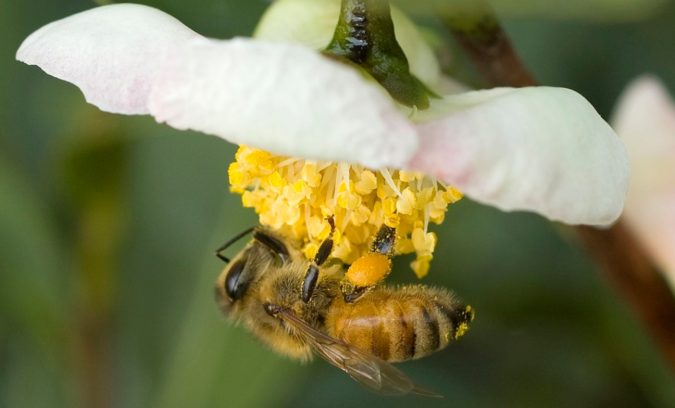| Family: | Theaceae |
| Genus: | Camellia |
| Species: | C. sinensis |
| Common names: | tea flower, tea tree flower |
| ZBAS (Zach’s bee attraction score) | 8 |
Since I am writing about winter flowers I thought I would post another one with photos I took many years back. Tea, the plant which produces tea leaves and then made into tea, is a commonly cultivated plant in China, mostly south of the Yangtze River. The total planted area is about 8.1 million acres producing close to 3 million tons of processed tea leaves. It also blooms during winter but as long as the temperature is about 16-20°C, A. mellifera will be foraging on this plant mostly for pollen. Pollen is trapped and sold at a premium price in China for human consumption. Other commonly sold pollen include those from rapeseed (canola), and lotus flowers (Nelumbo nucifera).
I visited a research station at Qiandaohu (Thousand Isle Lake) which belonged to the Zhejiang University (Hangzhou, Zhejiang China) on Nov. 22, 2008. Prof Songkun Su took me there and the station was managed by his then father-in-law, Prof. Shenglu Chen. Many Western honey bees were foraging on the tea flowers and almost all bees had pollen on their corbiculae. I think I must have brought my ring flash since all the photos were so bright and nice :)
- An A. mellifera foraging on Camellia sinensis, notice the bright yellow pollen on the right hind leg.
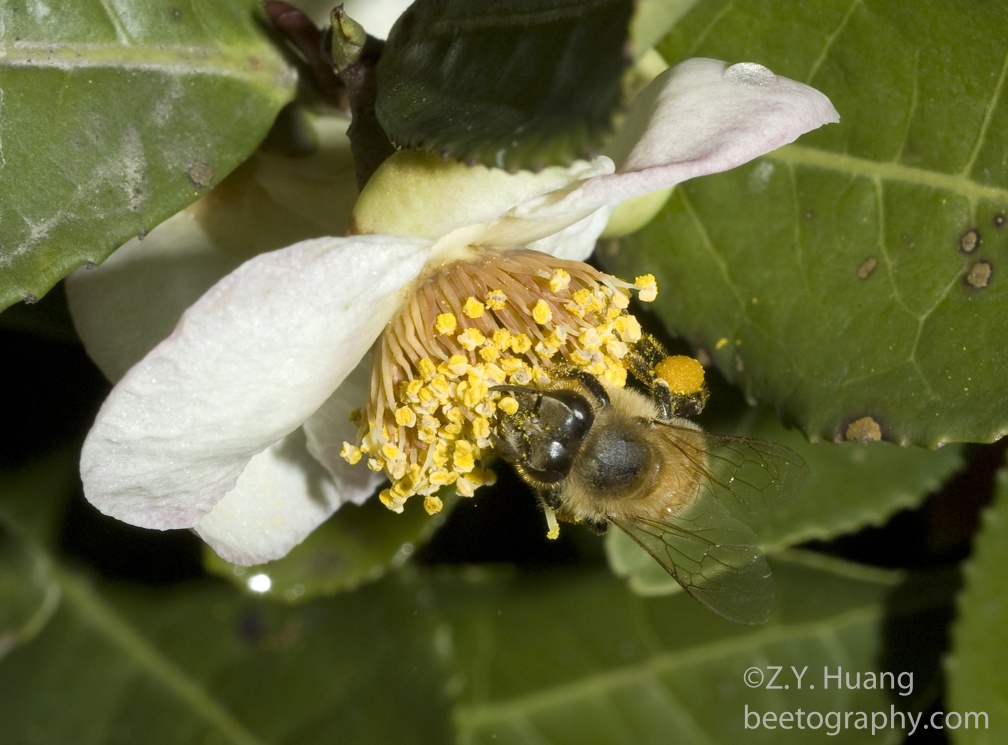
2. Notice the pollen from the flowers were coming off the flower. This must not be the natural angle of the flowers (most of them facing down) since pollen were dropping perhaps due to the small wind produced by the incoming bee.
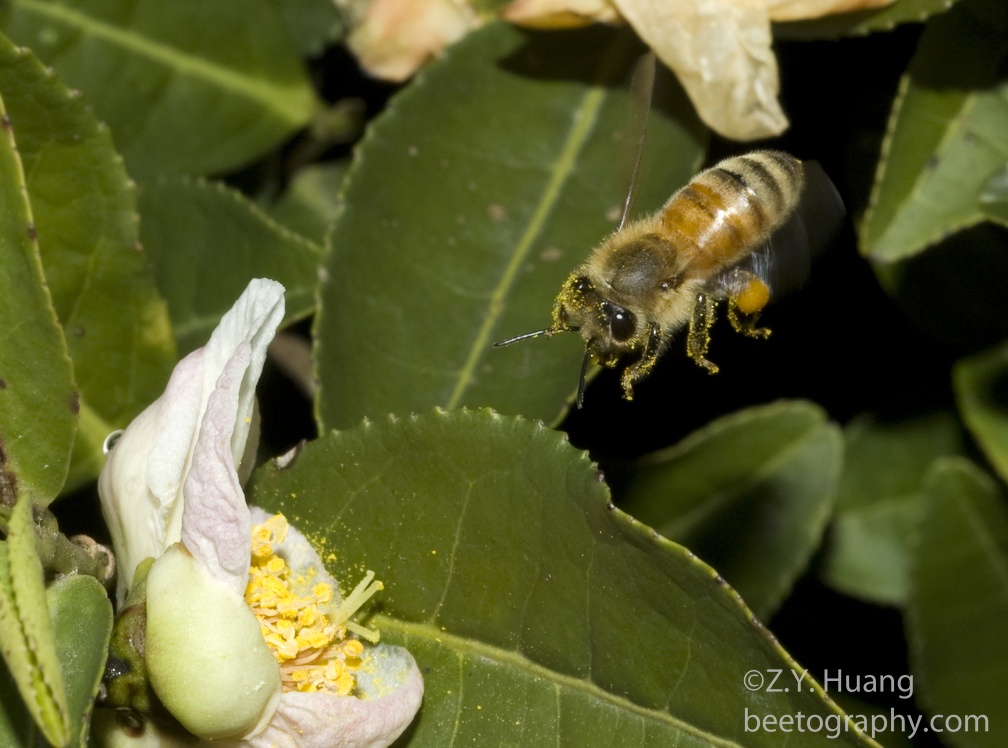
3. On this photo you can see the slight pinking tint of the flower petals. Again pollen on the hind leg.
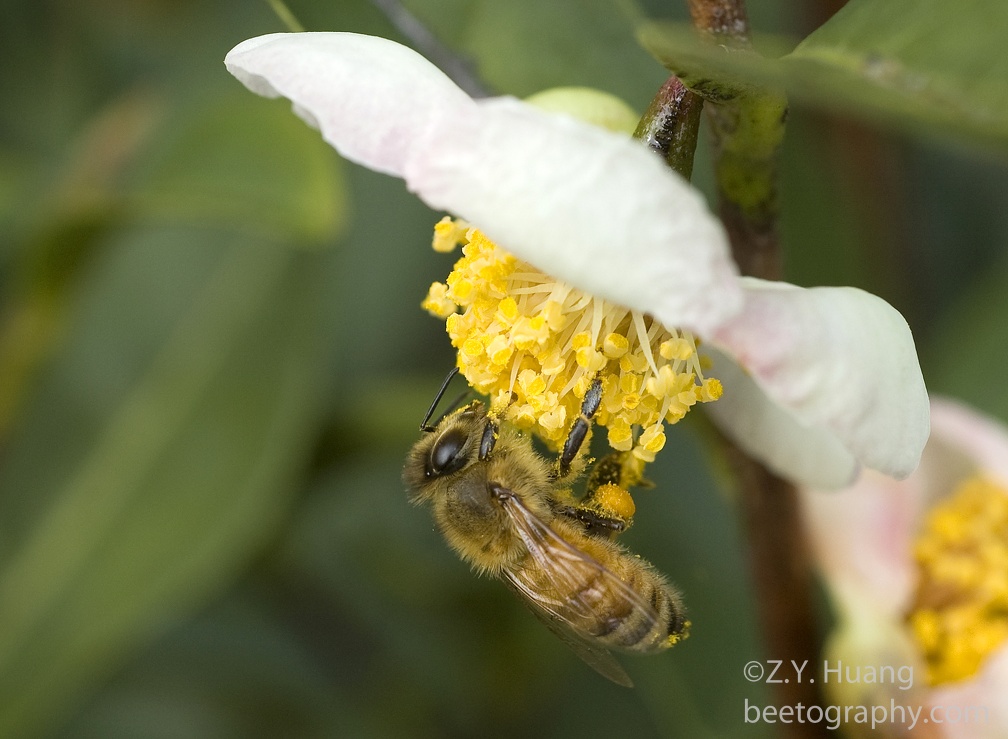
4. Occasionally a flower is at the upright position and this one you can see the stigma clearly (with 3 forks).
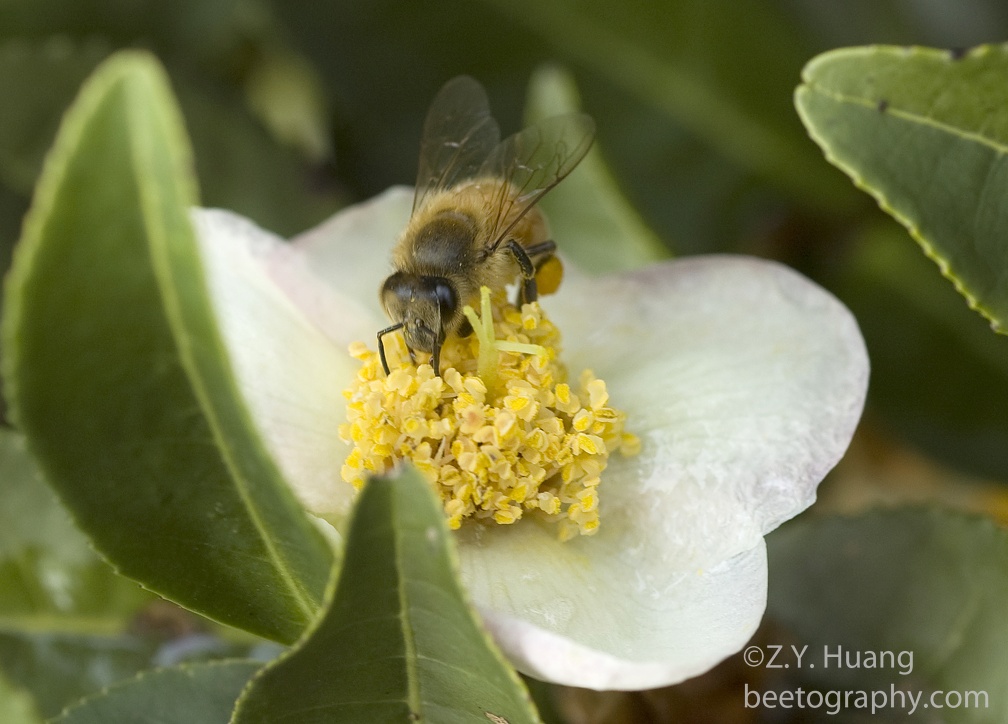
I have also photos of Apis cerana foraging on this plant, but in a different post about tea oil camellia.

